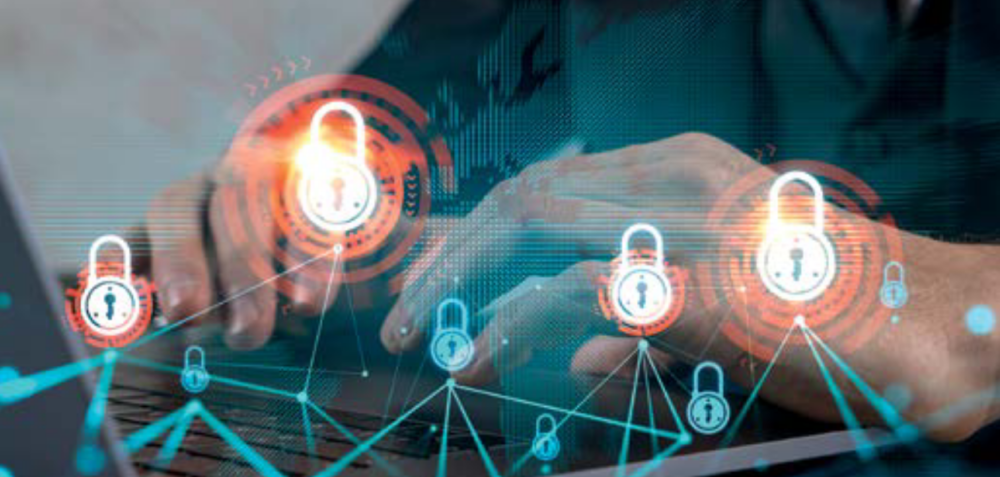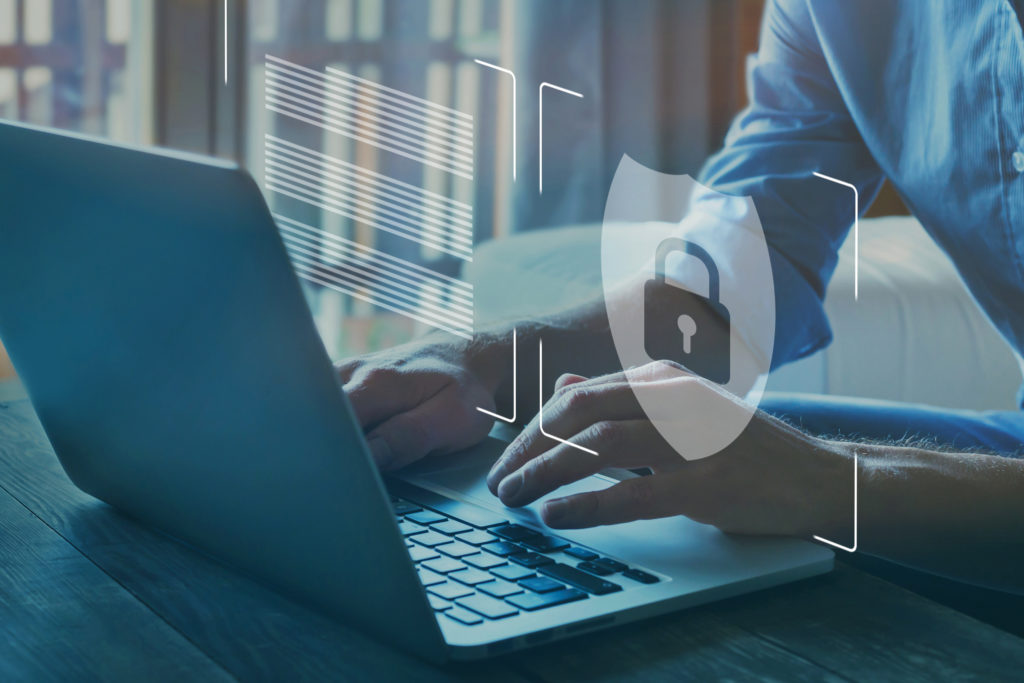
M&E Journal: Tool Up Your Remote Workforce
In 2019, 68 percent of business leaders felt their cybersecurity risks were increasing. 2020 may have seen another challenge take precedence.
It’s safe to say that COVID-19 created a health crisis that humanity was ill-equipped to deal with.
WHAT STARTED AS A MANAGEABLE, SHORT-TERM SHOCK ISN’T GOING AWAY
Everyone knows what the “new normal” has become: no big trade shows, no unnecessary travel and no short business trips. We’ve all moved meetings online and lost the commute, as we’re working from home where we can. Short term, getting people back to work was the priority. Media and entertainment was no exception. Socially distant productions got back filming in the UK and Europe late spring, with official guidelines being drawn up by trade associations and unions.
Cinemas re-opened (at time of writing at least), giving a much needed boost to theatres that were already buckling under financial pressure; although long term prospects look bleak.
Businesses within M&E have survived the health crisis because of the willingness to be flexible. We’re now well equipped with socially distant procedures for productions and mandatory mask wearing in studio set-tings. Post-production work can take place at studios if required but also at home.Immediate steps have been taken to ensure the survival of our industry, sating a hungry consumer base.
It turns out being forced to stay at home leads to more people watching TV – Disney+ launched in most of Europe, doubling its subscriber figures from 25 million in February to 50 million in May; their publicly stated goal was 60 million users by 2024. Peacock and HBO Max had strong launches in the U.S. too. At the same time, online piracy saw a 30 percent surge from February to March.
All this online demand (both legal and illegal) led to Netflix cutting the bitrate of their programming by 25 percent in March, in response to the European Commissioner having concerns that everyone would be streaming content whilst in lockdown. A rapacious audience demanding content had to be catered for and the industry reacted to secure their own productions and output as soon as possible.
 PLAYING CATCH-UP
PLAYING CATCH-UP
But mistakes can be made. Over 40 percent of machines across all businesses were running remote desktop protocol according to Webroot, which is unsecured to brute force attacks — and such attacks grew by more than 400 percent in March and April. The attack surface area increased dramatically, allowing cyber criminals more opportunities than ever.
Suddenly the dynamics have changed dramatically — the studio isn’t where employees are working. The media may be sat on a hybrid cloud, rather than local servers. Home workers may need to work from local files on their laptop, within a network environment that isn’t up to the same security standards the third-party supply chain would normally operate within.These supply chain locations have likely gone through Trusted Partner Network (TPN) audits or follow MPA guidelines.
They may have gone through ISO27001 accreditation and (National Institute of Standards and Technology) NIST frame-work assessment, with annual penetration testing. Can you say the same for home networks? According to Tom’s Guide in 2018, 82 percent of people don’t change the default admin login for their router.T he studio will have their security team on premises to deal with potential issues, as well as monitoring tools — both digital and physical.
Intelligence on who, when, where and how a sensitive file is being accessed is more important than ever —and even more so is ensuring all media files are encrypted, so they can’t be accessed by nefarious actors.Another concern that has been raised to us is that of other household members accessing sensitive data or media files. How do you protect against this? The file access is still going to report a correct IP address for access if it is the home computer.
What if a child or partner decides to take a quick look or (heaven forbid) capture the latest project that an employee is working on? If they’re working from their kitchen or dining room, there’s only so much that can be done.
IS THERE ANY SOLUTION?
For many, security and productivity always has a trade-off, and getting people working again was the priority. Now the dust has settled on ensuring productivity, as an industry we can make planned out, strategic decisions to bolster defense measures which may have been (understandably) overlooked.
MESA’s own Audio Business Continuity Alliance (ABCA) working group is looking at how home studio requirements can be standardized across a disparate network of freelancers.
The aim of making remote working as normal as possible, for those who would ordinarily need to drop into a studio to record within localization (for instance). The sharing of knowledge is testament to the leadership and resilience of those within M&E, a recognition that the industry only survives if everyone bands together on certain issues.The fact is remote working isn’t that new for many people.
It was happening if person-al circumstances demanded it — safely and securely. Whereas this used to be a small pro-portion of workers in the past, it’s destined to be a number that will continue to grow.
Fortium have worked with freelancers within the localization supply chain for many years. This supply chain is often disparate, with freelance talent taking responsibility for their security. They are often well versed in their trade and what is expected of them — they are skilled individuals that take their jobs seriously and wouldn’t want projects to be compromised on their watch. The new work-from-home workforce just needs a bit of time to bed in and get to grips with it.
Thankfully, the tools already exist to keep projects as secure as possible, soon to be complete with industry agreed guidelines to point people in the right direction.
 SECURITY THE NEW NORMAL, JUST LIKE THE OLD
SECURITY THE NEW NORMAL, JUST LIKE THE OLD
Empowering end users to self-protect and getting them to understand that cybersecurity procedures from a company premise should be maintained at home is key. Locking workstations and closing sensitive assets when not in use is best practice, regardless of where work is being carried out. This is not new.Then it comes down to more granular controls that may be required for individual users. Fortium deals with customers who restrict sensitive media access with file encryption in-use.
The locking of files to specific time windows is something that has turned into a key requirement. Likewise, the ability to remotely change file access rules dynamically is immensely useful when files have been downloaded to local work environments.
From a productivity perspective, security tools need to be applicable to any network setup.
Homeworkers may be at the mercy of an ISP that isn’t as reliable as the one they’re used to at the studio — so how does an encryption tool deal with an intermittent connection or reduced bandwidth? We need to ensure file access doesn’t turn off when someone else in the household decides to start streaming 4K movies. Likewise, encryption needs to be seamless and transparent, with no impact on a potentially less powerful home workstation. These factors have always been a requirement for the busy workflows Fortium products operate in.
WHAT HAPPENS WHEN WORK IS COMPLETE?
The ability for users to apply their own encryption locally is a powerful tool. It means that files, travelling to potentially more loca-tions than they ever had to before, can have new encryption policies as they’re returned to content owners. By self-protecting output, everyone in the supply chain can sleep easier at night. There’s always been a school of thought within security that it’s a journey without an end destination.
COVID-19 dramatically changed the road we were traveling on. After a tumultuous year, the destination is back in sight.
* By Tony Miles, Co-Founder, CEO, and Michael Nixon, Marketing, Engagement Manager, Fortium
——————————————————
Click here to translate this article
Click here to download the complete .PDF version of this article
Click here to download the entire Spring/Summer 2020 M&E Journal
